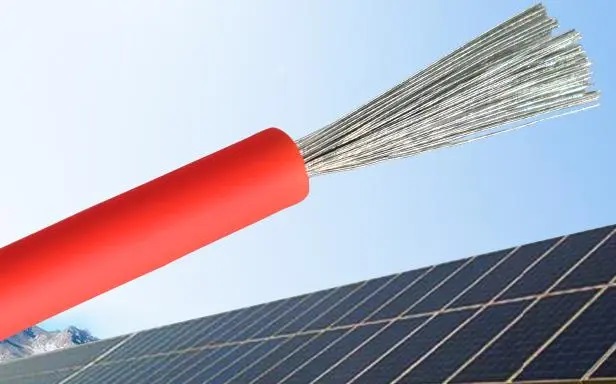https://www.jiangyuancables.com/metal-sheathed-inorganic-mineral-insulated-cable/ :
In the world of electrical distribution systems, power cables play a crucial role in transmitting electricity from the source to end-users. Over the years, advancements in technology have led to the development of various types of power cables, each designed to meet specific electrical requirements. One such innovation is the single core power cable, which has gained significant attention for its unique features and capabilities. This article aims to explore the advantages, applications, and future prospects of single core power cables, shedding light on their potential to revolutionize electrical distribution systems.
1. Understanding Single Core Power Cables:
Single core power cables are electrical cables with a single conductor surrounded by an insulating material and an outer protective layer. Unlike traditional multi-core cables, which consist of multiple conductors bundled together, single core cables have a solitary conductor, usually made of copper or aluminum. The insulation material, commonly composed of PVC, XLPE, or EPR, provides electrical insulation and protection against environmental factors such as moisture, heat, and mechanical stress.
2. Advantages of Single Core Power Cables:
2.1 Enhanced Power Transmission Efficiency:
Single core power cables offer improved power transmission efficiency due to reduced skin and proximity effects. The single conductor design minimizes the skin effect, which causes the current to concentrate near the surface of the conductor, leading to power losses. Additionally, the absence of proximity effects, which occur when multiple conductors in a cable influence each other's current flow, further enhances power transmission efficiency.
2.2 Increased Load Carrying Capacity:
The single core design allows for larger conductor cross-sectional areas, resulting in increased load carrying capacity compared to multi-core cables of similar dimensions. This increased capacity enables single core cables to handle higher electrical loads without compromising safety or performance. As a result, single core cables are suitable for applications where high current carrying capabilities are required, such as in power distribution networks, industrial plants, and large-scale infrastructure projects.
2.3 Improved Fault Detection and Maintenance:
Single core power cables offer enhanced fault detection and maintenance capabilities. With a single conductor, it becomes easier to identify and locate faults within the cable system, minimizing downtime and improving system reliability. Additionally, the separation of conductors eliminates the need for complex phase identification during installation and maintenance, simplifying the process for electrical engineers and technicians.
3. Applications of Single Core Power Cables:
3.1 High Voltage Transmission and Distribution:
Single core power cables are widely utilized in high voltage transmission and distribution networks. Their ability to handle high electrical loads and their superior power transmission efficiency make them ideal for long-distance power transmission. These cables are typically installed underground or in overhead lines, connecting power stations to substations and then further distributing electricity to end-users.
3.2 Renewable Energy Systems:
The renewable energy sector, including solar and wind power generation, has witnessed significant growth in recent years. Single core power cables are well-suited for these applications due to their capability to handle high currents produced by renewable energy sources. These cables are used to connect power generation systems, such as solar farms or wind turbines, to the electrical grid, ensuring efficient and reliable power transfer.
3.3 Industrial and Commercial Installations:
Single core power cables are extensively used in industrial and commercial installations where a high degree of reliability and load carrying capacity is required. They are commonly employed in large-scale manufacturing plants, data centers, hospitals, and commercial buildings, delivering power to various equipment, machinery, and systems.
4. Future Prospects and Innovations:
Single core power cables continue to evolve with ongoing research and development efforts aimed at improving their performance and efficiency. Some of the emerging trends and innovations in this field include:
4.1 Compact Design:
Efforts are being made to reduce the overall size and weight of single core power cables while maintaining their load carrying capacity. This compact design allows for easier installation, reduces material usage, and optimizes space utilization in crowded environments.
4.2 Enhanced Insulation Materials:
Advancements in insulation materials such as cross-linked polyethylene (XLPE) and ethylene propylene rubber (EPR) are improving the thermal stability, durability, and resistance to environmental factors of single core power cables. These innovations enable the utilization of single core cables in a broader range of applications, including extreme temperature environments.
4.3 Smart Grid Integration:
The integration of single core power cables into smart grid systems is gaining attention. By incorporating advanced monitoring and communication technologies, these cables can provide real-time data on power flow, temperature, and fault detection, enabling efficient grid management and predictive maintenance.
Conclusion:

Single core power cables offer numerous advantages over traditional multi-core cables, including enhanced power transmission efficiency, increased load carrying capacity, and improved fault detection capabilities. These cables find applications in high voltage transmission and distribution, renewable energy systems, and industrial and commercial installations. With ongoing advancements in design, materials, and integration with smart grid systems, the future of single core power cables appears promising. As the demand for efficient and reliable power transmission continues to rise, these cables are poised to play a pivotal role in revolutionizing electrical distribution systems worldwide.
